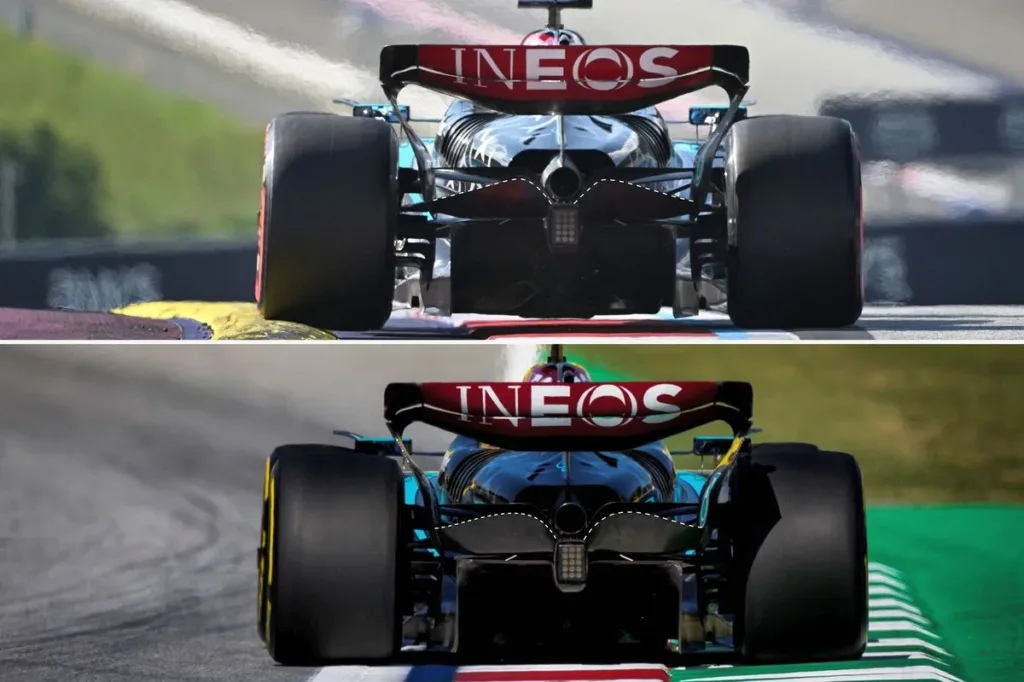Formula 1 News: Updates Abound at Austrian Grand Prix Ahead of Formula 1 Schedule
The Formula 1 Austrian Grand Prix, set to take place on the Formula 1 calendar, brought forth a typically muted round of updates, considering its position as a sprint event amidst a triple header. However, some teams continued to push the boundaries, seeking those crucial performance gains that have been a hallmark of the 2022 season.
Mercedes Introduces Beam Wing Modifications
Mercedes, a stalwart of innovation, has maintained its policy of introducing updates to nearly every race, adding a new beam wing arrangement to its arsenal at the Red Bull Ring. This latest development aimed to reduce downforce and drag, as seen in the modified lower element of their bi-plane arrangement. The trailing edge has been cut back, and the outer perimeter shortened, contributing to a more streamlined design.
Sauber Debuts New Beam Wing
Another team that has been aggressively pursuing aerodynamic flexibility is Sauber, which prepared multiple rear wing options for various venues. At the Austrian Grand Prix, they debuted a new beam wing arrangement, featuring a single element designed to reduce downforce and drag. Although neither Sauber driver utilized the new beam wing in the race, it’s likely to be saved for a track that requires less downforce and drag.
McLaren Targets Low-Speed Performance
McLaren, meanwhile, has been on a roll with its comprehensive round of updates, propelling the MCL38 towards the front of the pack. Despite this, the team continues to target its weaknesses, introducing another batch of parts in Austria. The focus was on low-speed performance, with changes made to the front wing and suspension fairings. However, achieving a balance between low-speed benefit and high-speed performance remains a significant challenge within the current regulations.
The Woking-based outfit’s designers have evolved their approach, aiming to alter the distribution ratio between downforce generation and flow conditioning. This has been achieved through revisions to the flaps, with a revised chord and trailing edge geometry. The outboard section of the wing has also undergone significant changes, incorporating endplate design features. The semi-detached flap tip architecture, introduced at Silverstone last season, remains, but with a more acute roll-back, likely resulting in a stronger vortex cluster.
Stay tuned for more Formula 1 news, Formula 1 schedule updates, and insights into the world of car racing as the season unfolds.
🔗 Source
